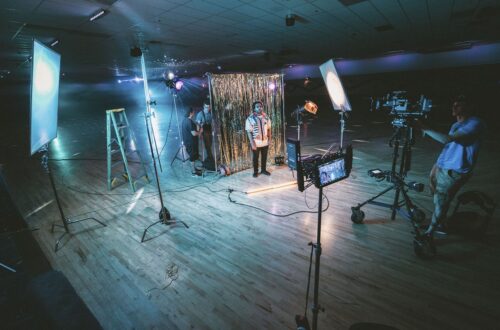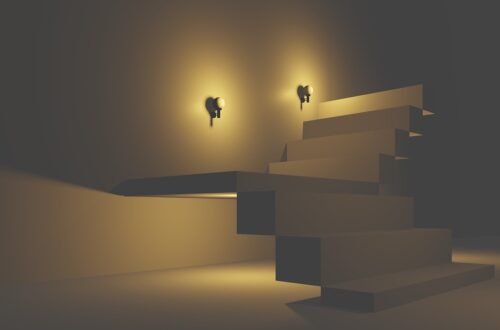The Role of Lighting in Video Production
Lighting is one of the most critical elements in video production. It not only influences the overall aesthetic and mood of a scene but also affects the viewer’s perception of the subject and the story being told. Understanding the role of lighting can elevate your video projects, making them more professional, engaging, and visually appealing. Here, we delve into the importance of lighting in video production and offer tips to enhance your lighting setups.
The Importance of Lighting in Video Production
1. Creating Mood and Atmosphere
Lighting sets the tone and mood of a scene. Whether you aim for a dramatic, suspenseful, or cheerful atmosphere, the right lighting can help convey these emotions effectively. For instance, low-key lighting with deep shadows can create a sense of mystery or tension, while bright, high-key lighting can evoke a feeling of happiness and clarity.
2. Enhancing Visual Appeal
Proper lighting enhances the visual appeal of your footage. It highlights the subject, adds depth, and creates a sense of dimension. By using lighting techniques such as three-point lighting, you can separate the subject from the background and create a more polished, professional look.
3. Directing the Viewer’s Attention
Lighting helps guide the viewer’s attention to specific parts of the frame. By strategically illuminating certain areas, you can emphasize key elements or actions in the scene. This is particularly useful in storytelling, where you want to ensure the audience focuses on important details.
4. Creating Depth and Texture
Effective lighting can add depth and texture to your shots. By using light and shadow, you can highlight the contours and details of your subject, making the image more three-dimensional and realistic. This technique is especially important in close-ups and detailed shots.
5. Ensuring Consistency
Consistent lighting is crucial for maintaining continuity in your video. Changes in lighting between shots can be distracting and can break the immersion of your audience. Consistent lighting helps create a seamless visual experience, enhancing the overall quality of your production.
Key Lighting Techniques
1. Three-Point Lighting
Three-point lighting is a fundamental technique in video production. It involves three main light sources:
- Key Light: The primary light source that illuminates the subject.
- Fill Light: A secondary light that reduces shadows created by the key light.
- Back Light: Positioned behind the subject, it helps separate the subject from the background and adds depth.
2. Natural Lighting
Natural lighting is a cost-effective and readily available resource. Shooting during the golden hours—early morning or late afternoon—provides soft, diffused light that is flattering and aesthetically pleasing. When using natural light, consider the position of the sun and use reflectors or diffusers to control the intensity and direction of the light.
3. Soft vs. Hard Light
Soft light, which is diffused and creates gentle shadows, is ideal for most video productions as it produces a flattering, natural look. Hard light, on the other hand, creates sharp shadows and high contrast, which can be used for dramatic or artistic effects. Understanding when to use soft or hard light can greatly enhance the visual impact of your video.
4. Color Temperature
Color temperature affects the mood and tone of your video. Measured in Kelvin (K), it ranges from warm (yellow/orange) to cool (blue) tones. Balancing the color temperature of your lights with the ambient light in your scene ensures a natural and cohesive look. Use gels or filters to adjust the color temperature of your lights if necessary.
5. Practical Lighting
Practical lights are visible light sources within the scene, such as lamps, candles, or windows. They add realism and depth to your shots and can serve as supplementary light sources. Incorporating practical lights creatively can enhance the mood and authenticity of your video.
Tips for Effective Lighting
1. Experiment and Practice
Lighting is an art form that improves with practice. Experiment with different setups, angles, and intensities to see how they affect your shots. Understanding the principles of lighting and how to manipulate them will give you more control over your visual storytelling.
2. Use Light Modifiers
Light modifiers such as diffusers, reflectors, and softboxes help control the quality and direction of light. They allow you to soften harsh light, fill in shadows, or direct light to specific areas. Investing in basic light modifiers can significantly improve the versatility and quality of your lighting setups.
3. Pay Attention to Shadows
Shadows can add depth and drama to your shots, but they can also be distracting if not used correctly. Pay attention to the placement and intensity of shadows, and use fill lights or reflectors to balance them as needed.
4. Stay Consistent
Maintaining consistent lighting throughout your shoot is essential for continuity. Take note of your lighting setup, including the position and intensity of your lights, to ensure consistency between shots and scenes.
Conclusion
Lighting plays a pivotal role in video production, influencing the mood, visual appeal, and overall quality of your footage. By understanding and mastering various lighting techniques, you can enhance your storytelling, guide the viewer’s attention, and create visually stunning videos. Whether you’re a beginner or a seasoned professional, investing time and effort into your lighting setups will pay off in the form of higher-quality, more engaging video content.





